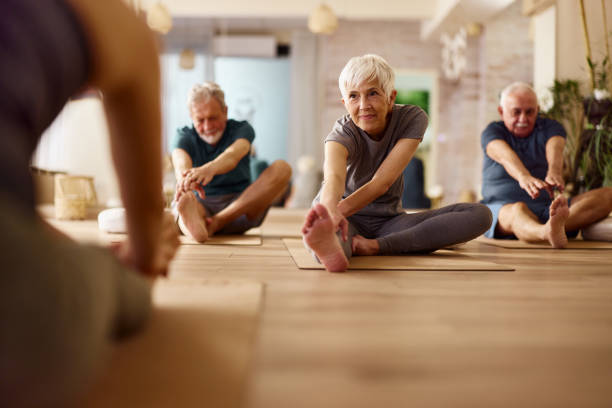Maintaining mobility and flexibility becomes crucial to preserving our quality of life as we age. Joint health plays a central role in our ability to stay active, independent, and pain-free. While aging naturally brings wear and tear to our bodies, incorporating the right exercises into our routine can significantly slow down joint degeneration and even improve function. Understanding how to care for your joints through movement and exercise can help you continue to enjoy life without unnecessary discomfort or restrictions.
Contents
The Importance of Joint Health in Aging
Joints connect bones and allow movement, supported by cartilage, ligaments, and synovial fluid. Over time, cartilage can break down due to repeated use, leading to stiffness, reduced mobility, and conditions like osteoarthritis. Joint issues can limit daily activities, from climbing stairs to reaching for objects, without proper care. However, regular exercise strengthens the muscles around joints, reduces stiffness, and keeps the body agile.
How Exercise Helps Preserve Joint Function
A well-balanced exercise routine provides multiple benefits for joint preservation. It strengthens muscles that support joints, improves flexibility, enhances circulation to deliver essential nutrients, and promotes overall mobility. Exercise also helps maintain a healthy weight, reducing excess stress on weight-bearing joints like the knees and hips.
Best Types of Exercise for Joint Health
Not all exercises are equally beneficial for joint health. High-impact movements can cause excessive strain, while low-impact exercises strengthen and protect joints without undue stress. Here are some of the best options:
1. Low-impact Cardio for Circulation and Mobility
Aerobic exercise enhances circulation, lubricates joints, and improves overall endurance. Low-impact options such as:
- Walking: Gentle on the joints while keeping the body in motion
- Cycling: Strengthens leg muscles and boosts cardiovascular health without strain
- Swimming: Water buoyancy reduces stress on joints while providing resistance to strengthen muscles
- Elliptical Training: Offers a smooth motion that minimizes joint strain while improving endurance
2. Strength Training for Joint Support
Strong muscles provide stability and reduce stress on joints. Incorporating strength training 2-3 times per week can help reinforce joint integrity. Consider:
- Bodyweight Exercises: Squats, lunges, and push-ups can enhance joint stability when done with proper form
- Resistance Bands: Provide gentle strength training with minimal joint strain
- Weight Lifting: Light weights with high repetitions help strengthen muscles without overloading joints
3. Flexibility and Mobility Exercises
Maintaining flexibility helps prevent stiffness and allows joints to move through their full range of motion. Effective flexibility exercises include:
- Yoga: Improves flexibility, balance, and strength while reducing stiffness
- Stretching Routines: Daily stretching helps maintain joint mobility and prevent tightness
- Tai Chi: A gentle movement practice that promotes joint fluidity and balance
4. Balance and Stability Exercises
Improving balance reduces the risk of falls, which can cause joint injuries. Simple yet effective balance exercises include:
- Standing on One Leg: Helps improve stability and lower-body strength
- Heel-to-Toe Walks: Enhances coordination and balance control
- Core Strengthening: Planks and gentle core exercises support proper posture and joint alignment
Tips for Exercising Without Harming Your Joints

To maximize the benefits of exercise while protecting your joints, follow these guidelines:
- Warm Up Properly: Gentle stretching and light movement prepare joints for activity, reducing injury risk.
- Use Proper Form: Poor posture or incorrect movements can lead to strain and injuries. Seek guidance if unsure.
- Listen to Your Body: Mild discomfort is normal, but sharp pain is a warning sign to stop and modify your routine.
- Stay Consistent: Regular movement is key to long-term joint health—avoid prolonged inactivity.
- Incorporate Recovery Time: Rest days allow joints and muscles to recover, preventing overuse injuries.
Lifestyle Factors That Support Joint Health
Beyond exercise, other lifestyle habits contribute to maintaining healthy joints:
- Maintain a Healthy Weight: Excess weight increases joint stress, especially the knees, hips, and spine.
- Stay Hydrated: Water helps maintain joint lubrication and cartilage health.
- Eat Joint-Friendly Foods: Anti-inflammatory foods like leafy greens, fatty fish, nuts, and berries help reduce joint pain and stiffness.
- Get Enough Vitamin D and Calcium: Essential for maintaining strong bones and joint function.
- Prioritize Sleep: Quality rest aids muscle recovery and reduces inflammation.
Final Thoughts
Aging gracefully doesn’t mean slowing down—it means staying active in a way that supports your body. By incorporating joint-friendly exercises into your routine, maintaining a healthy lifestyle, and listening to your body’s needs, you can preserve mobility, reduce pain, and continue enjoying life with strength and confidence. Movement is medicine, and with the right approach, you can keep your joints functioning optimally for years to come.
